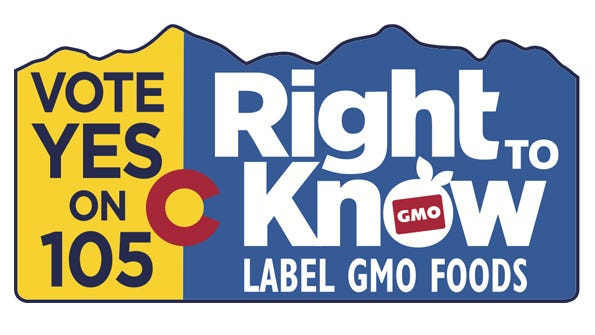After Colorado's defeat, natural industry weighs next steps for GMO labeling
With Colorado's failed Proposition 105, and the verdict on Oregon's Measure 92 too close to officially call, natural industry thought leaders share next steps for GMO labeling.

 The natural industry is reeling from Colorado's recently defeated GMO labeling bill. The loss was hard: Proposition 105 lost by a hefty 616,412 votes, with 65.7 percent of voters rejecting it.
The natural industry is reeling from Colorado's recently defeated GMO labeling bill. The loss was hard: Proposition 105 lost by a hefty 616,412 votes, with 65.7 percent of voters rejecting it.
Initial accounts of Oregon’s Measure 92 to label GMOs reported that it narrowly lost. But it's still up in the air. “Not all counties have finished counting ballots,” said Tony Green, communications director for the Oregon Secretary of State. “After November 18th, we’ll pretty much know where it stands.”
Since The Oregonian called the vote a defeat on November 5th, Yes on 92 votes have been creeping up. At the time of publication, Measure 92 trailed by 6,634 votes—a miniscule 0.44 percent.
“We’re going to follow the lead of the campaign and not jump the gun before there is an official announcement,” said David Bronner, president of Dr. Bronner’s Magic Soaps, who contributed nearly $1.6 million to the Oregon Right to Know Campaign. “We’re at 49.8 percent and closing,” he later added.
Raising capital
With Colorado’s unsuccessful bill, natural industry experts are examining how best to proceed with GMO labeling initiatives. Funding the future GMO labeling movement is obviously a huge issue.
“We are challenging the business model of some of the most powerful and well-funded chemical companies on the planet. The movement needs to get serious about financing itself,” says Robyn O’Brien, founder of AllergyKids Foundation and author of The Unhealthy Truth (Broadway Books, 2009). “The talent and passion of those involved is extraordinary, but for the movement to be sustainable, we have to finance it like our livelihoods depend on it. After all, that is exactly what the other side has done.”
Both state bills were outspent by millions. Opponents of GMO labeling dumped over $28.9 million in Colorado and Oregon to convince voters that labeling GMOs would raise food prices, strain local farmers—largely through television and radio advertisements.
Such deep pockets of anti-GMO labeling corporations pose a quandary to the natural industry, which, despite increasing sales growth and consumer support, simply cannot compare to the campaign budgets of Monsanto, Dupont and other biotech companies and food conglomerates.
“Hey, they bought our elections fair and square,” says Steven Hoffman, managing partner of Compass Natural communications firm. “Money was spent behind a borage of deceptive ads that confused voters on an already complex issue.”
State labeling, still
Tackling GMO labeling at a state level may still be the best tactic to move the dial.
“Big Ag companies have huge budget for lobbyists in Washington D.C.,” says Hoffman. “If we go after this on a federal level, think of the resources they’ll have then.”
Case in point, the trade association Biotechnology Industry Organization (BIO) spent $6.19 million on lobbying efforts in 2014 alone, according to OpenSecrets.org, a website that reports campaign expenditures.
Despite loss in Colorado and possibly in Oregon, state labeling initiatives have passed in Vermont, and Maine and Connecticut with trigger clauses. Most recently, Maui, Hawaii passed a moratorium on GE testing and growth until certain public health studies are conducted.
As the GMO labeling movement grows, O’Brien stresses that the natural industry must create a well-defined campaign roadmap for pervasive success—and collaboration between campaigns is key.
“There is incredible insight and wisdom to be gained, not only from the food industry leaders, but also from those involved in the four state campaigns,” says O’Brien. “As we mobilize at the local level, it creates a national conversation. A national effort to coordinate these state labeling initiatives will change the game.”
Hoffman points out that though Colorado’s measure didn’t pass, GMO labeling awareness certainly did. “1.6 million people voted in Colorado,” he says. “That means 1.6 million people had to think about GMOs who may not have had to think about them before.”
About the Author
You May Also Like





